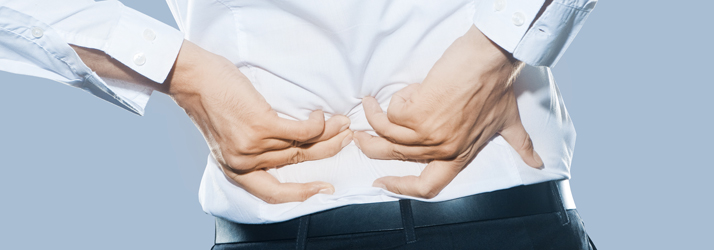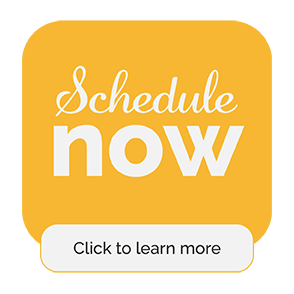Back Pain Options in Grand Junction CO

Understanding and Overcoming Back Pain: Causes, At-Home Remedies, and Professional Solutions
Back pain has become a global issue. The WHO (World Health Organization) states that more than 600 million people were affected by low back pain in 2020. They project 850 million will be affected by 2050. This means a very significant portion of the population will be affected by back pain at some point in their lives.
Back pain is the leading cause of disability globally. It affects people’s ability to work and perform basic daily self-care activities. This translates to lost productivity and a large economic burden on the person experiencing the pain as well as family. Redlands Chiropractic & Wellness Center can help you manage your back pain in Grand Junction CO.
What causes back pain in Grand Junction CO?
Poor Posture
Our sedentary lifestyles, hunched over desks and computers, and poor posture are big contributors to the epidemic.
Sprains and strains
When you lift heavy things, or swing a golf club too many times, you could end up with a strain or sprain that causes back pain.
The symptoms can be similar (pain, swelling, bruising and limitation of movement) but the injuries are different. A strain is an injury to a muscle or tendon. Tendons are cords that connect muscles to bones. Strains occur when a muscle or tendon is overstretched or torn.
A sprain is an injury to a ligament. A ligament is a very strong band of tissue connecting two bones across a joint. Sprains happen when a ligament is stretched, torn, twisted as a result of a sudden violent movement.
Both strains and sprains are graded from Grade I to III based on the severity of the injury. The higher the grade, the worse the injury and the longer it will likely take you to heal.
Aging
As the population ages, there is a natural increase in the incidence of degenerative diseases, (diseases which cause the deterioration of the structure or function of organs and tissues) affecting discs, nerves and bones; degenerative disc disease includes conditions like herniated discs, adult scoliosis, spinal stenosis and spondylolisthesis.
Back pain is a global issue affecting millions of lives. Most of us, and probably you, will experience debilitating back pain at some point in your life.
What causes upper back pain?
Muscle strain
If your upper back hurts, it could be because you’ve strained your muscles hunching over your desk, looking at your computer screen or because you leaned forward one too many times during manual labor or sports. Booth poor posture and repetitive motion are common causes of muscle strains that lead to upper back pain.
Sore muscles and pinched nerves are not the only causes of upper back pain. Other tissues can cause problems as well.
Fascia knots
The fascia, a web of thin, strong tissue that encases muscles, tendons and organs can develop tightness and knots referred to as trigger points. Recent research has shown that fascia is densely packed with nerves and is a key creator and transmitter of pain.
Often the knot in fascia transmits pain to a distant location in the body. Upper back pain can be caused by knots or trigger points in the shoulder blades, neck and chest.
Herniated disks
Another common cause of upper back pain is thoracic disc herniation is the bulging or rupturing of intervertebral discs in the thoracic spine. This can compress or irritate adjacent nerves causing very intense pain radiating to the back, ribs and arms. Have you ever tried to get off your knees and the pain in your back was so intense you couldn’t get up?
What causes lower back pain?
Strains and sprains
Mid back pain has a similar range of causes as upper back pain including poor posture, hunched over desk and computer positions, repetitive motions and often, heavy lifting utilizing poor technique for lifting.
Conditions related to aging
As you age you may become more susceptible to osteoarthritis or degenerative disc disease(a condition in which a damaged disc causes pain) or from joints (osteoarthritis).
Injuries
Trauma injuries from accidents, falls and sports can cause sprains, strains and fractures in the thoracic spine (the middle section and longest section of your spine) can cause sudden pain.
Referred Pain
Your pain may not even originate in your back at all. In fact, your internal organs can cause pain that you’ll feel in the middle of your back. Referred pain from internal organs can be felt acutely in the back and strongly mimic musculo-skeletal pain.
- Gallbladder - inflammation of the gallbladder often due to gallstones can cause intense referred mid-back pain and shoulder pain. The pain can be very sharp and accompanied by vomiting and nausea.
- Pancreatitis - inflammation of the pancreas can cause severe pain which radiates deep to the lower back and can worsen when lying flat or eating. It is often accompanied by fever, nausea and vomiting.
- Lungs - certain lung conditions such as pneumonia can cause referred pain to the mid back area which often worsens with coughing
Red flag symptoms for medical care
It is vital that, if you experience mid back pain with any of the following symptoms, that you seek medical help immediately for proper diagnosis and treatment:
- Fever
- Nausea
- Difficulty breathing
- Pain that worsens with certain activities
Types of Lower back pain
Almost everyone will feel lower back pain at some point in their lives. Your lower back is fragile, and many conditions can make it hurt.
Lumbar strain or sprain
Ever have a day lifting boxes from a low shelf and putting them in a higher location while moving into or out of your home? Did the next day leave you feeling like every move you made could result in serious damage to your lower back? Lumbar strains and sprains are the most common form of lower back pain. It involves the overstretching or tearing of muscles and ligaments in the lower back. It is often caused by sudden twisting, turning, lifting with the lower back instead of the legs and overuse. Symptoms include pain, stiffness and muscle spasms.
Sciatica
Sciatic nerves travel from the buttocks down both legs to the feet. When a herniated disc or a bone spur presses on this nerve, you can feel pain in your lower back. Ever hear someone say “Ouch, it’s my sciatica again!”?
Degenerative disc disease
Degenerative disc disease is a disease that involves the breakdown of spinal discs over time leading to episodes of lower back pain of varying intensity and location. This can cause pain in the lower back or neck, pain that radiates through the extremities, pain that worsens by sitting, bending or twisting. The pain may be accompanied by numbness or tingling. It is very common in adults over 40. The pain is sometimes excruciating.
Note: Discs are cushions that sit between the vertebrae of your spine (bones) and act as shock absorbers allowing flexibility for bending and twisting and very importantly, allow space for nerves to exit the spinal cord.
Scoliosis
Scoliosis is an abnormal twisting and curvature of the spine. Doctors typically diagnose scoliosis when there is a larger than 10 degree curvature. It can occur in childhood, causes unknown, but is increasing in frequency among older adults. Scoliosis can present with pain, arthritis, breathing difficulties and pinched nerves. Surgery is an option for people with severe scoliosis but more often it is treated with specialized physical therapy called the Schroth Method. Schroth Method seeks to return the spine to a more natural position through specialized exercises.
If you're struggling with back pain in Grand Junction CO, call Redlands Chiropractic & Wellness Center today to schedule an appointment.
OFFICE HOURS
Monday
9:00am - 12:30pm
2:00pm - 6:00pm
Tuesday
8:00am - 12:30pm
2:00pm - 6:00pm
Wednesday
8:00am - 12:30pm
2:00pm - 6:00pm
Thursday
8:00am - 12:30pm
2:00pm - 6:00pm
Friday
8:00am - 12:30pm
2:00pm - 6:00pm
Saturday & Sunday
Closed
Redlands Chiropractic & Wellness Center
2764 Compass Dr Suite 103
Grand Junction, CO 81506



